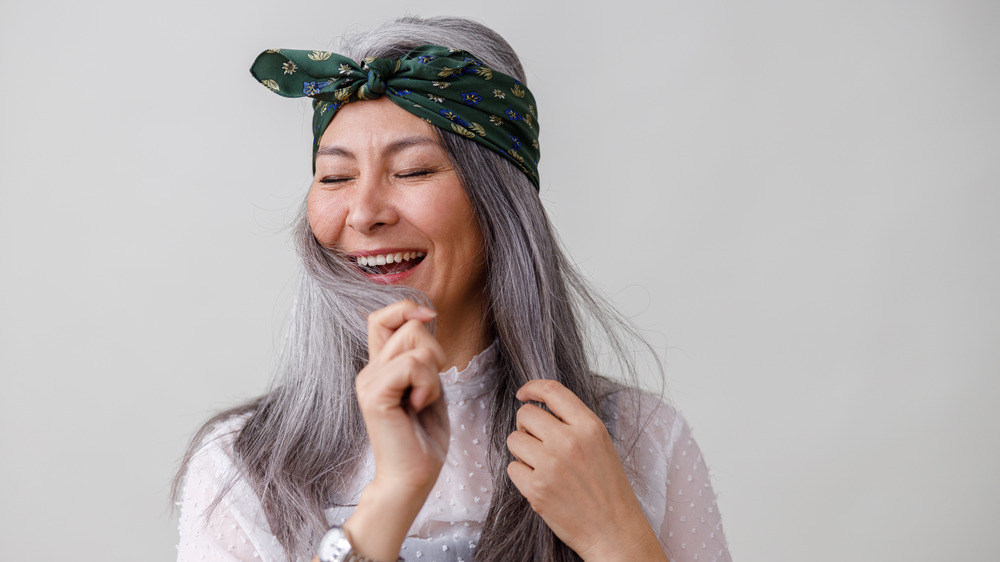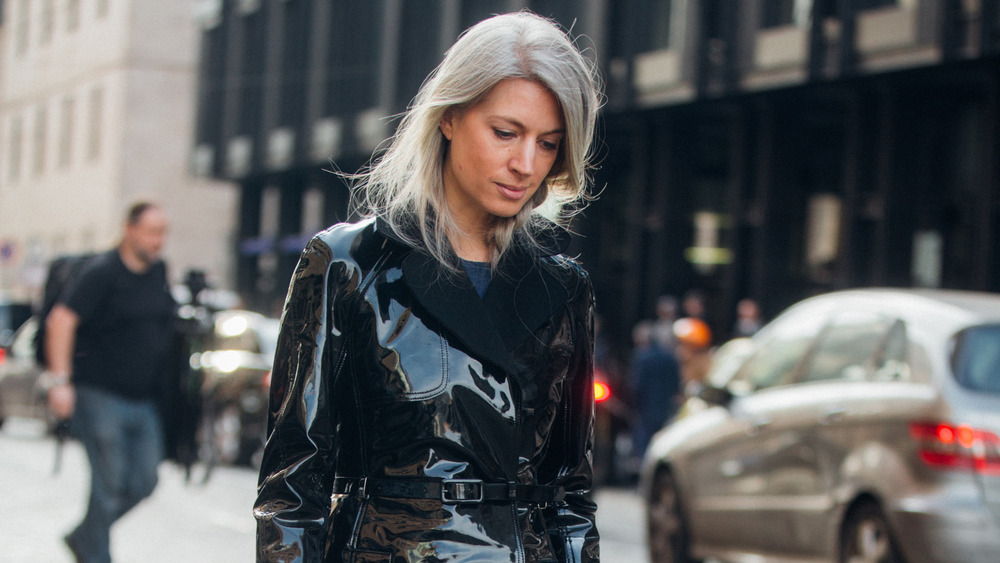Why Highlighting Is The Worst Thing You Can Do For Graying Hair
Gray hair has finally broken free of its negative reputation. The outdated idea that their sudden appearance is a bad sign is no longer — in fact, things are practically the opposite now, with different tones of gray showing up on heads artificially (via Glamour). Yes, people are asking for gray hair when they set foot in their salons. The trend became fully fledged in 2019 according to Cosmopolitan (though hints of it were popping up earlier), and both 2020 and now 2021 are seeing no signs of it slowing. Silvery strands have gained hype from the youngest Gen Z-ers and to folks who are naturally going gray, and people are embracing the sleek color.
But what if you personally just aren't a fan of your recent onset of gray hair? Or maybe you've accepted gray for awhile but are looking to switch things up temporarily. Regardless of your situation, if you have natural bits of silver streaked through your mane and are hoping to hit refresh, there's one service you shouldn't be asking your colorist for: highlights.
Why you should avoid highlighting gray hair
Highlights might seem like a worthy solution for bringing pigment back into your hair, but unfortunately this isn't the case. George Papanikolas, a colorist whose bio says he's done the hair of celebs like Ellen Pompeo and Shay Mitchell, explained to Byrdie that jumping into highlights can damage your hair and create a jarring contrast against your complexion. Does this mean you have to completely avoid highlights altogether? Thankfully not.
You don't have to necessarily kiss your dreams of having honey blonde wisps goodbye. Natural blondes and those with pale complexions often do better with highlights. But for those who aren't naturally light-haired or who have deeper tones in their skin, Papanikolas told Byrdie that adding a little dimension to your roots along with the occasional super soft set of highlights is your safest bet.
If getting to the hair salon is currently out of the question, semi-permanent dyes and products like root cover-up sticks, sprays, and powders can work wonders for the time being, especially if you'd rather go darker than lighter (via Women's Health). Most are easy to apply at home, but there's no doubt in our mind that your colorist wouldn't mind a FaceTime chat to ensure you get the technique down just right.
In essence, you have plenty of options if you'd like to change up those grays. And if it's highlights you're really lusting after, just be mindful of the tone and frequency.

